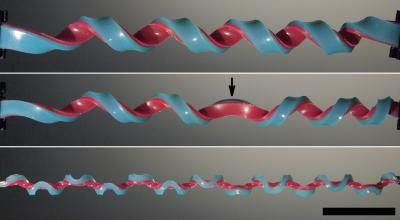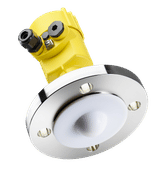Icy exposure creates armored polymer high tech foams
Advertisement
Chemists and engineers at the University of Warwick have found that exposing particular mixtures of polymer particles and other materials to sudden freeze-drying can create a high-tech armored foam that could be used for a number of purposes, including a new range of low power room temperature gas sensors.
Freeze-drying has been used to create structured foams before, the first such experiments being with rubber in the 1940s with the ice crystals formed throughout this process acting as templates to form the porous foam structure.
However when trying to create particularly strong, stable polymer foam structures engineers and chemists today tend to rely on more complicated processes. The most straightforward of these methods is the so-called foaming or expanding process, which consists of introducing small discontinuities (for example by dispersing a compressed gas) into a soft polymer and then taking a further step to reinforce the cellular structure created upon polymerization or cooling.
The University of Warwick team's new approach to fabricate polymer foams by "ice-templating" differs from previous strategies in that they use a special range of colloids (mixtures of small particles dispersed in water), with crucial differences in their hardness and size, as key building blocks. In particular they employ a blend of larger ''soft'' polymer latexes in conjunction with a range of much smaller ''hard'' nanoparticles such as silica.
When such a mixture is exposed to freeze-drying the difference in diameters induces a concentration enrichment of the smaller harder particles in the mix near the wall of each growing ice crystal. This creates a cellular structured foam in just one step in which each cell is effective given an armored layer of the smaller, harder nanoparticles.
The Warwick researchers also found that by changing parameters, such as the nanoparticle/polymer latex ratios and concentrations, as well as the nanoparticle type, it was possible to fine-tune a certain the pore structure, and the overall porosity, of the polymer foams. The team were also able to employ various types of inorganic nanoparticles to create this instant freeze-dry foam armoring including: silica, Laponite clay, aluminium oxide, as well as small polystyrene latex particles.
The armored polymer foams have a range of applications but one of the most interesting could be a new range of room temperature low power gas sensors. The team increased the complexity of their mixture of colloids by the addition of a third colloidal component, carbon black particles with approximate diameters of 120 nm, which allowed them to produce an conductive foam 14% of the weight of which was carbon black particles.
Lead researcher Dr Stefan Bon from the University of Warwick's Department of Chemistry said:
"This new process allows us to create interesting foam based nanocomposite materials which show promising results as gas sensors that can operate at room temperature and differ from traditional metal-oxide-based sensors. We know that existing chemical sensors formed from composites of carbon black particles and insulating polymers have been previously shown to form room-temperature (thus low-power) chemical sensors for detecting a range of volatile organic compounds. Now in one step we can place the same material in a high tech polymer foam to create a new range of gas-sensor devices. We believe these materials could become a new generation of sensing porous films."
Original publication: Catheline A. L. et al.; "Conducting Nanocomposite Polymer Foams from Ice-Crystal-Templated Assembly of Mixtures of Colloids" Advanced Materials 2009
Other news from the department science
These products might interest you
Most read news
More news from our other portals
See the theme worlds for related content
Topic world Sensor technology
Sensor technology has revolutionized the chemical industry by providing accurate, timely and reliable data across a wide range of processes. From monitoring critical parameters in production lines to early detection of potential malfunctions or hazards, sensors are the silent sentinels that ensure quality, efficiency and safety.

Topic world Sensor technology
Sensor technology has revolutionized the chemical industry by providing accurate, timely and reliable data across a wide range of processes. From monitoring critical parameters in production lines to early detection of potential malfunctions or hazards, sensors are the silent sentinels that ensure quality, efficiency and safety.
































































